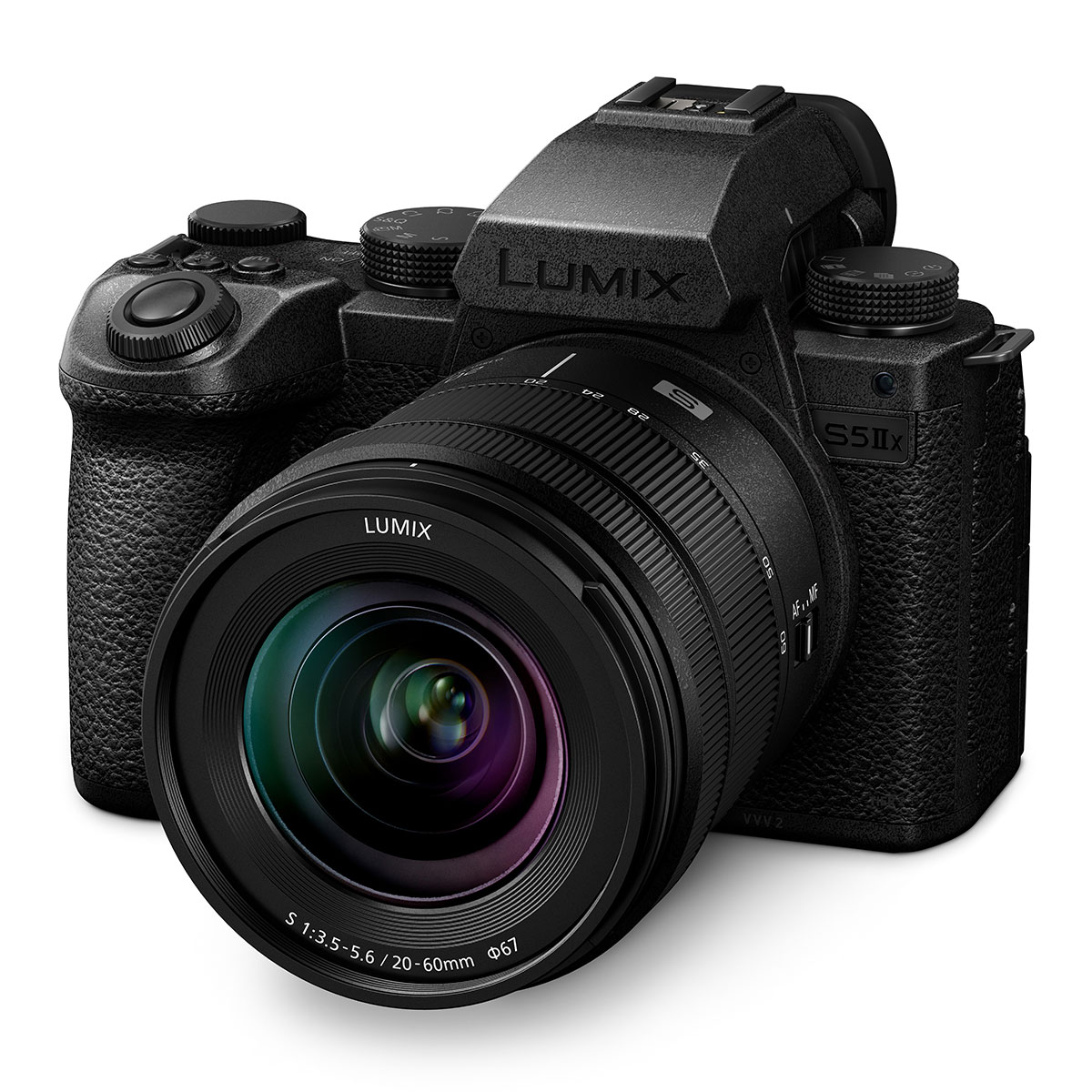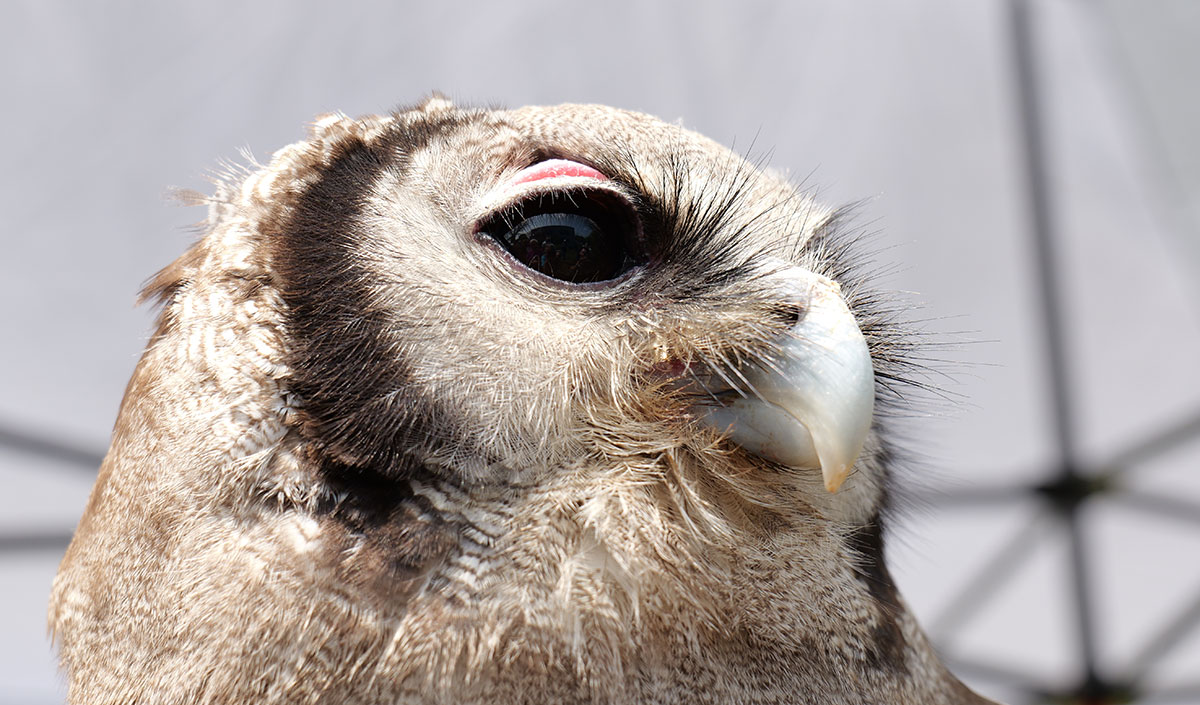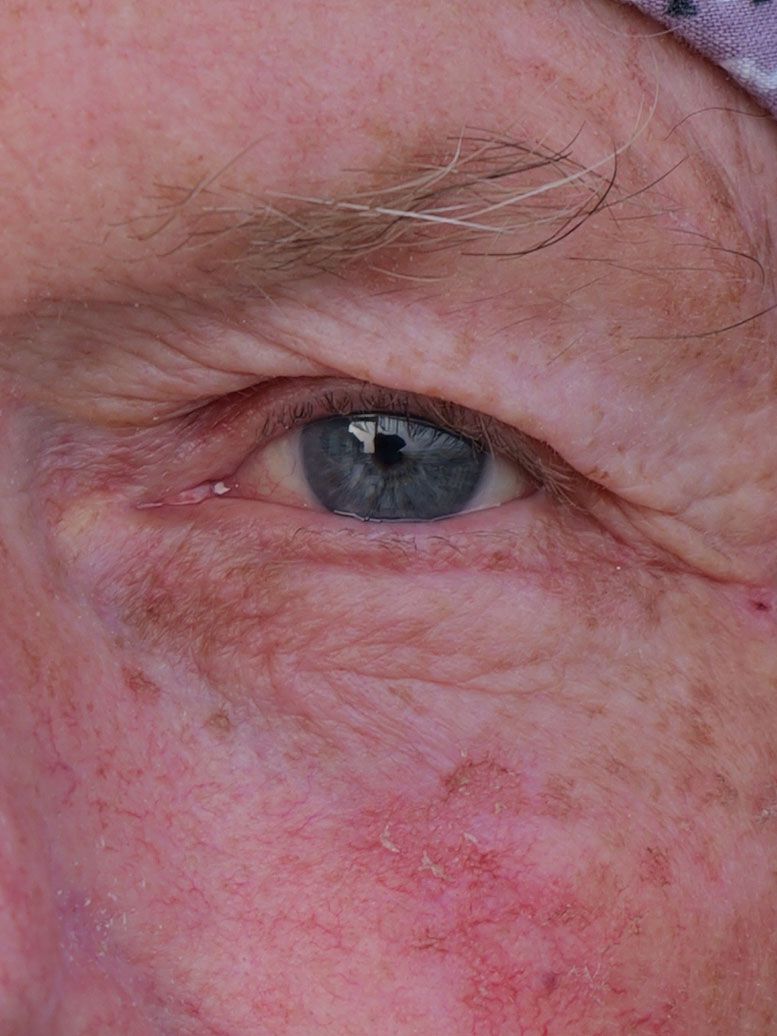New Lumix Increases Video Muscle
Review of the Panasonic Lumix S5 IIX
11.21.2023

Earlier this year, Panasonic released the full-frame mirrorless Lumix S5 II, the successor to its S5 model. That release was followed by the Panasonic Lumix S5 IIX, also identified as the S5M2X, the latest model in Panasonic’s full-frame line, both sporting 24-megapixel sensors.
As you might expect, there are many similarities between the two cameras, which are essentially the same except that the S5 IIX provides higher-end video features as well as livestreaming capabilities. But Panasonic Lumix S5 II owners weren’t left behind thanks to a $199 firmware update that adds a number of S5 IIX features, including raw data output over HDMI, Blackmagic Raw, and Live View Composite.
Both cameras are highly capable at capturing stills and video, easily meeting the needs of hybrid shooters, but the X version takes video features up a notch. For this review I tested the Lumix S5 IIX with the 20-60mm F3.5-5.6 kit lens.

The camera doesn’t have all the fancy subject recognition options that some other cameras do, but you’ll get human, human and animal, and face/eye detection.
Body and Design
The Panasonic S5 IIX is well designed and solidly built. At 26.1 ounces and measuring 5.28x4.0x3.54 inches, the S5 IIX has a bit of heft to it compared to some of its mirrorless competition. But it wasn’t too heavy or bulky to comfortably carry around all day without strain or discomfort.
One physical difference you may notice about the body is that the S5 IIX is monochromatic by design. Its all-black design (including its name badge) looks both mysterious and stealthy. Sure, it’s cool, but sometimes you have to tilt the camera to catch the light just right to identify the markings on the controls, and if it’s really low light, you may need a little flashlight.
The body design of this dust-and splash-resistant camera is well thought out and allows for abundant and generously-sized buttons and dials. Operation is easy and efficient, especially when taking advantage of the camera’s custom options. Even more convenient are the separate menus for still and video settings, so there’s no need to change settings when switching from one mode to another. And I loved the eight-way joystick for moving and selecting AF points. A substantial grip provides a solid handhold, even for large hands.
The 3.68M dot OLED viewfinder is clear and bright and the fully-articulated, touch 3-inch LCD works well under most lighting conditions.
Well-equipped with ports, including USB-C (for in-camera charging or writing to SSDs), microphone, headphone and remote jacks, and a full-sized HDMI port. The latter is a welcome change from some other mirrorless cameras such as the Micro (type D) HDMI of the Canon EOS R6 II. Dual SD card slots sit side-by-side and both support SDXC UHS-II cards.

Live View Composite is perfect for long exposures, like this 30-second night sky image, showing you the live image on screen as it “develops,” so you can close the shutter when the image reaches the visual exposure you want.
Features
The S5 IIX is fully loaded with features, many of which you’d expect from a camera of this class, but others make the S5 IIX stand out among its peers, especially when it comes to video. A look at the densely packed, but logically arranged and navigable, menu system hints at the depth and breadth of the S5 IIX’s feature set.
Multiple bracketing options include white balance, exposure compensation, and focus, with the latter perfect for focus stacking. You’ll get features such as color shading compensation, diffraction compensation, and more. There’s also timelapse/animation features and a sheer overlay function for alignment of photos and, perhaps more important, to ensure that a paused video picks up with the exact same framing when recording restarts.
And, if you need a super high-res image, a 96-megapixel high resolution capture mode is available. Panasonic even included some technology to help compensate for slight movement during High Resolution capture.
Perhaps my favorite, though, is Live View Composite, a feature I first tried on Olympus cameras and immediately fell in love with. Perfect for long exposures (night sky photography, light painting), this feature shows the live image on screen as it “develops,” so you can close the shutter when the image reaches the visual exposure you want. This eliminates the guesswork that usually accompanies long exposures. The camera employs a technique used by astrophotographers and shoots a black slide before the exposure begins to help reduce image noise. Bringing this feature to a full-frame camera like the S5 IIX makes it all the more impressive.

I was surprised at how well the 20-60mm kit lens captured details, and most of the images I shot were sharply focused.

Performance
The Panasonic S5 IIX is generally quite responsive. Other than a lag before an image appears when pressing the playback button, all of its hard controls react quickly to a press or a turn. Navigating the menus will get you where you want to be swiftly, and tapping a focus point or menu setting on the touchscreen LCD delivers an immediate response.
Continuous shooting, which maxes out at about seven frames per second with single AF and 9 fps with continuous AF, falls a little behind the competition. Switch to the electronic shutter for 30 fps shooting, but as with all e-shutters, you risk a chance of rolling shutter. Still, I found that the mechanical burst mode was more than sufficient for most shooting scenarios.
With its new phase hybrid AF system, AF speed and accuracy have improved. The camera doesn’t have all the fancy subject recognition options that some other cameras do, but you’ll get human, human and animal, and face/eye detection. Unless you’re regularly shooting moving vehicles, birds, or other specialties, it’s doubtful you’ll miss having the extra options.
Image stabilization is very effective up to 6.5 stops when using an image-stabilized lens. And if you’re a run-and-gun type of video shooter or do walk-and-talks for a vlog, the camera’s Active IS Mode is a real bonus.
Dual native ISO helps keep image noise under control. It’s best to keep ISO at around 6400 or lower for best results.
Battery life isn’t great—around 370 shots—so it’s best to have a second battery handy. Remember, you can charge the battery via USB-C, so even if you don’t have a power outlet nearby, a power bank can get your battery going again.

With few exceptions, semi-automatic exposures were spot on and in manual exposure, the camera’s meter directed me to almost perfect settings.
Video
A quick look at video specs, is proof that the S5 IIX has truly taken its video capabilities up by several notches, not least of which is the ability to record directly to external USB-C SSD drives. This facilitates the larger files when using All-I codecs and higher resolution ProRes Raw. Braw is also available with compatible Atomos or Blackmagic external recorders. The S5 IIX will further appeal to videographers looking for the best quality possible with its All-I codecs.
Video can be shot in 5.9K and Cinema 4K (C4K), among other formats, including full HD. And thanks to its built-in fan cooling system, recording time is essentially unlimited (depending on ambient temperatures).
Another stand-out attribute among cameras in its class is the ability to use the full sensor for video output up to 6K. Other features include waveform and vectorscopes for more precise exposure and color accuracy. Add to that extensive styles for videos and stills as well as the ability to utilize LUTs and creative options abound.

Test shots exhibited natural but rich colors under both natural and studio light.

A few high contrast scenes were a little lacking in dynamic range but the camera did a good job under all other lighting conditions.
Image Quality
Both still and video exhibited excellent image quality. Test shots exhibited natural but rich colors under both natural and studio light. With few exceptions, semi-automatic exposures were spot on and in manual exposure, the camera’s meter directed me to almost perfect settings. A few high contrast scenes were a little lacking in dynamic range but the camera did a good job under all other lighting conditions.
I was surprised at how well the 20-60mm kit lens captured details, and most of the images I shot were sharply focused. Granted, I didn’t try to capture birds in flight or other fast-moving objects, but I was very happy with the lens’ sharpness.
Bottom Line
The Panasonic Lumix S5 II and S5 IIX are highly capable hybrid cameras. They both offer features that often exceed their peers and, as such, provide good value for the dollar.
If you’re a current S5 II shooter, it may be worthwhile to pay for the firmware upgrade to bring your camera closer in line with the S5 IIX (upgrade key DWW-SFU2). Of course, that depends on your needs and shooting priorities, but if video is even moderately high on your list or you have a penchant for long exposure stills and can make good use of Live Composite, the $200 out-of-pocket for the firmware upgrade is a good investment.
But if you’re looking for a new hybrid camera and want some of the best video specs you can get for a reasonable price along with excellent image quality and features you’re likely to find only in higher priced cameras, the $200 price difference between the S5 II and the S5 IIX is pretty much a no-brainer. The Panasonic Lumix S5 IIX is $2200 for the body only and $2500 with 20-60mm kit lens.
Theano Nikitas is a photographer and freelance writer covering the photo industry.
Tags: cameras
